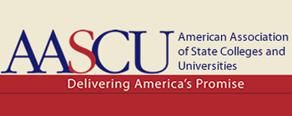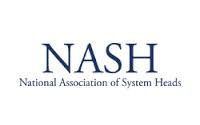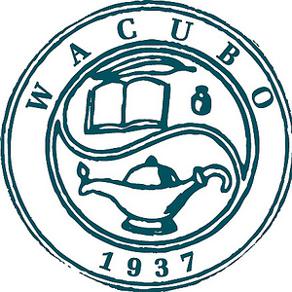National Higher Education Association Trends

ACE American Council on Education
June 02, 2015
Higher Education Act: Comments on Risk-Sharing White Paper Released by Sen Lamar Alexander
This paper was signed by ACE and 25 Higher Education Professional Associations.
This paper offers proposals to “Realign and improve federal incentives so that colleges and universities have a stronger vested interest and more responsibility in reducing excessive student borrowing and prioritizing higher levels of student success and completion. The paper can be read at:
http://www.acenet.edu/news-room/Documents/Comments-Alexander-Risk-Sharing.pdf

American Association of State Colleges and Universities
June 02, 2015
Statement from AASCU on Student Aid
We applaud the Administration’s attention to the actual operations of the federal student loan programs and welcome the promised improvements to loan servicing and customer service in Department of Education contracts. For too long, federal loan servicers and debt collectors have engaged in questionable, unethical, and outright illegal tactics in their interactions with borrowers. Today’s announcement builds on the Department of Education’s recent termination of several contracts, and will, we hope, signal a sustained effort to improve service quality for all borrowers, including those struggling to repay predatory private-label loans. Read more:
http://aascu.org/map/PSSNRDetails.aspx?id=11312

American Institutes for Research
June 02, 2015
The number of sub baccalaureate credentials granted in Colorado is rapidly growing with some graduates earning as much as, or even more than, those with bachelor’s degrees. These findings are from a new analysis looking at 10 years of data on graduates of all public and many private institutions in Colorado who work in the State. “The postsecondary education system in Colorado offers many pathways that can help students secure good jobs with middle class earnings, and they are not only doing it with bachelor’s degrees. Those with an associate’s of applied science, for example, make more than $40,000 in median earnings a year after college, or about $10,000 more than the state median per capita income.” Between 2009 and 2013, the number of associate’s degrees grew the fastest, seeing 104 percent increase. This was followed by bachelor’s degrees (58%); short term certificates, or those taking between one or two years (30%).
Read the entire report, and view a chart that shows how the pay gap narrows for workers http://www.air.org/news/press-release/associate-s-degrees-and-certificates-can-be-path-middle-class-new-report-coloradowith different levels of educational attainment:

APLU American Public & Land Grant Universities
June 02, 2015
New Report From APLU & Other Higher Ed Groups Finds University Cluster Hiring Can Be Effective for Increasing Faculty Diversity and Improving Campus Climate
Faculty cluster hiring is a very valuable strategy for public universities, all of whom want to recruit the best faculty and get ahead in a competitive research landscape. Attracting a diverse group of scholars who arrive with the intention of collaborating across disciplinary lines with a collegial group of scholars helps universities propel themselves toward research excellence and ensure success for the diverse student populations they serve. Faculty cluster hiring is an innovative strategy that involves recruiting new faculty into multiple disciplines and engaging them in collaborative, interdisciplinary research topics across the university. The strategy promises to transform higher education through the development of diverse research teams that will address some of society’s most complex challenges. Read the entire report:
Failure to Launch: APLU Statement on NASA Authorization Act for 2016 and 2017
Instead of reaching for the stars, the initial draft of the NAS Authorization Act for 2016 and 2017 falls short of providing the support for the next generation of Earth and space exploration that will allows us to better understand and protect our planet and answer a vast array of fundamental questions regarding the universe. While we appreciate the Committee’s efforts to include aspirational funding levels if a deal is reached to avert the sequestration-level caps scheduled to take effect n FY2016, these levels are still below where we need to be. Read the e entire article at:

AAC&U Association of American Colleges & Universities
In a statement submitted to the Senate HELP Committee in response to its call for comments, AAC&U President Carol Geary Schneider urged members of the committee as it considers possible changes to accreditation to “prioritize first and foremost the goal of ensuring that all college students participate in high-quality programs that are well-designed to advance a set of essential learning outcomes…and that accredited institutions make visible their commitment to these learning outcomes and students’ demonstrated achievement of them.”
Read more:
http://www.aacu.org/press/press-releases/aacu-president-comments-to-senate-help-committee

Bill & Melinda Gates Foundation
June 02, 2015
Go to the above Gates Education link for a chart on the vast income gap in college degrees in 3 charts:
- Equity Indicator 5a. Bachelor’s degree attainment by age 24 for dependent family members by family income quartile: 1970-2013
- Equity Indicator 1a: Cohort College Continuation Rate (CCCR) by family income quartile for dependent 18 to 24 year olds: 1970-2012
- Equity indicator 5b: Bachelor’s attainment rates by age 24 for dependent family members who entered college by income quartile: 1970 to 2013
Click on: https://twitter.com/gatesed
Lumina Foundation
June 02, 2015
A Stronger Nation Through Higher Education
The 2015 Report is now available. Lumina has just released its annual progress report toward the goal, “A Stronger Nation”. It offers detailed data arrays that describe degree attainment at the national, state, and county levels. The report also provides degree attainment data for each of the nation’s 100 most populous metropolitan regions. View the attainment rates. There are individual policy briefs for all 50 states. All are download PDFs.
http://www.luminafoundation.org/stronger_nation
Gallup-Lumina Foundation Poll Finds Overwhelming Majority of Americans Support Increasing Attainment
The full report is available, but key findings include:
Key Finding #1: Americans Value Postsecondary Education
Key Finding #2: Hispanics and African Americans Equate More Attainment With Jobs and Quality of Life
Key Finding #3: Americans See Affordability and Student Debt as Barriers to Degree Attainment
Key Finding #4: Americans Don’t Feel College Degrees are Preparing Them for Workplace Success
Key Finding #5: Americans are Increasingly Accepting Professional Certificates and Online Learning.
Read the entire paper at:
http://www.luminafoundation.org/news-and-events/gallup-2015
National Association of State Directors of Career Technical Education Consortium

June 02, 2015
No new or recent information has been posted to this site.

National Association of College and University Business Officers
June 02, 2015
Last year, a bipartisan group of eight senators, led by Sen. Claire McCaskill, introduced the Campus Accountability and Safety Act (CASA) as concerns over sexual assaults on college campuses garnered significant national attention. Sens. McCaskill and Kirsten Gillibrand have since released an updated version of S.590.
NACUBO again joined a number of higher education associations in a letter describing the challenges institutions face in carrying out current laws and detailing concerns with the proposals. The letter states: “We support many concepts in the bill intended to help campuses prevent and respond to these cases and provide needed support to survivors. However, improving the execution of these concepts would help the bill achieve its intended goals.”
For additional info, click on the links in the article at:

National Association of System Heads (NASH)
No new or recent information has been posted to this site since 1-16-2015.
Western Association of College and University Business Officers

No new or recent information has been posted to this site.

Western Interstate Commission for Higher Education
June 02, 2015
WICHE recently put together an infographic that provides quick overviews of distance education enrollment patterns, based on IPEDS Fall 2013 survey data that might challenge popular opinion:
- Public students primarily attend distance education institutions in their home state.
- For-profit students primarily attend distance education institutions in other states
- Distance education growth from 2012 to 2013 varied greatly by higher ed sector, and the growth occurred despite overall higher education enrollments decreasing by 4%.
- The number of institutions serving students outside their state and outside the US is growing.
- More than 2/3rrd’s of full distance students enroll in public or nonprofit colleges
- One in eight students took ALL their courses through distance delivery
- One in four students took at least 1 distance course.
See the infographic at:
http://wcet.wiche.edu/learn/busting-the-myth-distance-education

The Wall Street Journal
June 02, 2015
On May 19th: The Great Recession and its aftermath have exposed a major mismatch between the skills of many college graduates and the skills employers are seeing. If anything, as technological change marches on, this problem may get worse.
University presidents and trustees cannot afford to be complacent. One compelling suggestion, by Monica Herk, the Committee for Economic Development’s vice president for education research, is that all institutions of higher learning focus far more on certifying competencies in particular skills that employers demand rather than on simply requiring students to complete a fixed number of classes. This may even lead to an unbundling of courses and certifications, much as the challengers to cable-television providers are now beginning to offer consumers. (Full disclosure: I am a member of CED’s research advisory board).
Key to making this new, potentially more cost-effective educational system work, Ms. Herk points out, is the availability and widespread use of various kinds of assessments – not necessarily all standardized tests — that can certify to employers that individuals have certain competencies.
The Collegiate Learning Assessment, which attempts to measure how much college students have learned from the beginning of their freshman year to sometime during their senior year, is one such tool that some 700 schools are now using. But there is plenty of room in the marketplace for many other types of specialized assessments.
Development of such tools should be, and maybe already are, a high research priority both in academe and in industry. Once some are validated by employers as reliable indicators of future work performance – and, with hope, better than the SAT is of college performance — the education market finally should be disrupted. Employers will demonstrate demand for workers with certified skills, however they are gained, and a highly competitive market among educational institutions of all types will lead to programs that help students of all ages gain those certifications more cost-effectively than is the case now.
Education will never be the same: unbundled, less costly and more effective.
*******************************************************************
On June 2, 2015: Stripes Group led a $65 million Series D Investment in Udemy Inc. to help the startup grow its online marketplace for education. Instructors on Udemy can create, promote and sell interactive courses to “lifelong learners” who browse, pay for and take the courses there “on demand”.
Udemy CEO Dennis Yang regards his 160-employee company as education’s answer to Netflix, or a kind of next-generation Pearson, the education publishing juggernaut. The San Francisco startup competes with other “edtech” platforms such as Pluralsight, Khan Academy, Coursera and Curious.com.
With 160 employees and offices in San Francisco, Dublin and Ankara, Turkey, Udemy currently offers more than 30,000 different courses in 80 different languages. The courses are not for college credit and the company does not have plans to offer degrees, Mr. Yang said. Subjects range from yoga, music and foreign languages, to coding, marketing and graphic design. Courses typically cost about $25, though some are available for free.
Stripes Group Managing Partner Ken Fox said he believes the company is on track for an initial public offering. The investor also said, “There’s not a real category leader here yet,” and Udemy’s main competition is “apathy” or “the self-help section on Amazon.”
The company intends to use the capital to make its offering better known among prospective teachers and students alike, and to ramp up the number of courses and features that the platform offers, especially to its international users.
